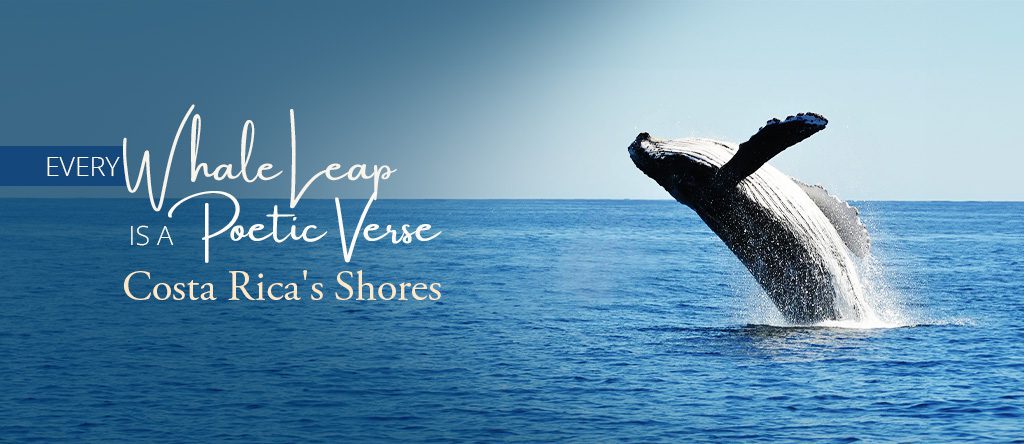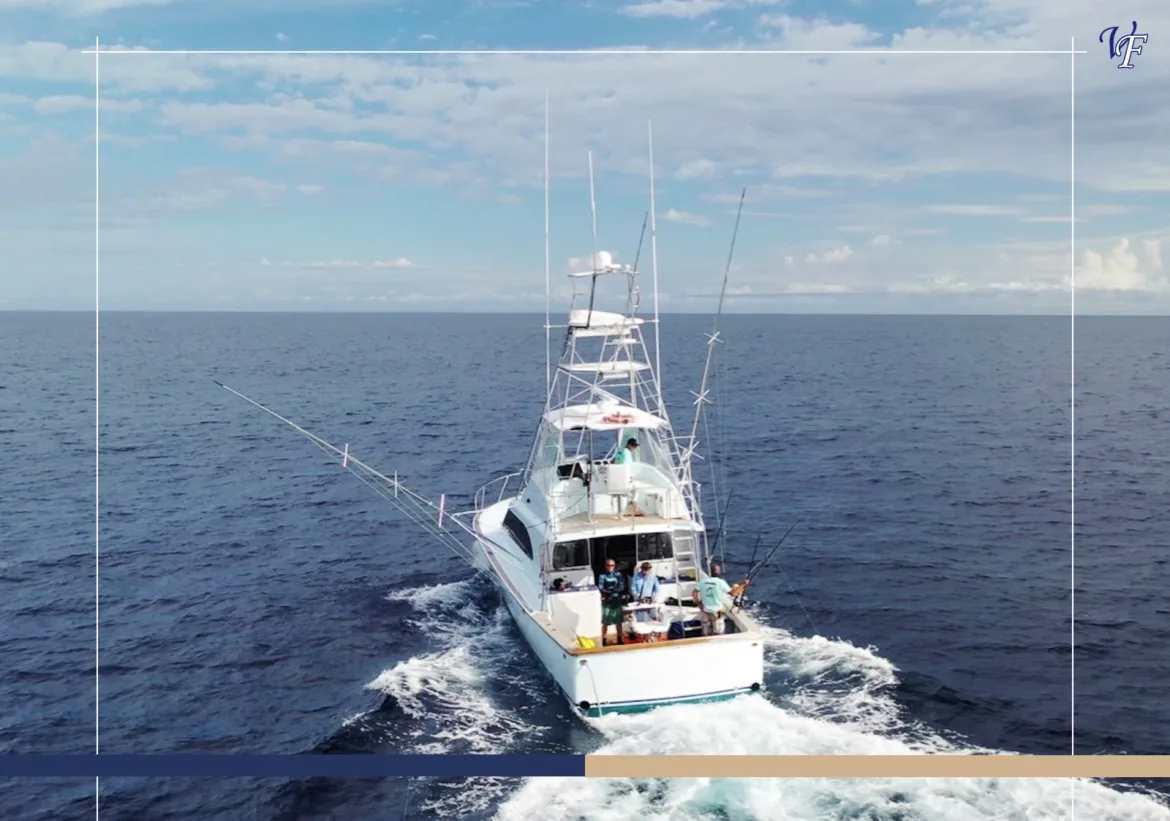Nestled between the Pacific and the Caribbean, Costa Rica, often dubbed the ‘rich coast,’ is more than just a haven of lush rainforests and staggering volcanoes. Its azure waters serve as a theater to one of nature’s most magnificent spectacles: the dance of the majestic whales. From the awe-inspiring humpbacks to the elusive deep ocean dwellers, The country’s coastline offers a panorama of these marine giants in their natural habitat.
This blog dives deep into the best spots to witness this spectacle, the types of whales you might encounter, and the conservation efforts ensuring these creatures continue to grace the Costa Rican shores.
Types of Whales in Costa Rica
With its diverse marine ecosystems and strategic location between two stunning coasts, Costa Rica is a magnet for various whale species. Each species, with its unique characteristics and behaviors, graces the coasts, offering enthusiasts and researchers fascinating glimpses into their world.
- Humpback Whales: Humpback whales in Costa Rica have one of the longest migration routes of any mammal on Earth. Two distinct populations grace the waters of Costa Rica: those migrating from the cold waters of Antarctica and those coming from California and the Pacific Northwest. This unique migration overlap ensures that Costa Rican waters host humpback whales for extended periods than most other regions, from December to April and from July to November.
- Deep Ocean Dwellers: While humpback whales might be the most recognized visitors, the deep waters hide many secrets off the coast. Species like the sperm whale, the largest of the toothed whales, frequent the deeper oceanic zones. These whales can dive up to 3,280 feet deep and stay submerged for up to 90 minutes, making them challenging to spot but a thrilling find when one does.
- Bryde’s Whales: Bryde’s whales are baleen whales, easily identifiable by three ridges on the top of their head and a series of vertical throat pleats. They have a sleek, dark gray body with a white underbelly. Bryde’s whales prefer warmer, tropical waters year-round than the migrating humpbacks. In Costa Rica, they are frequently seen in the Gulf of Nicoya and the Gulf of Dulce.
In sum, the waters in this Central American country serve as a vibrant tapestry of whale species, each contributing uniquely to the marine biodiversity. Whether you’re eager to witness the playful antics of the humpbacks or keen to spot the elusive deep ocean dwellers, there are many fascinating water-based activities to enjoy in Costa Rica.
Best Locations for Whale-Watching in Costa Rica
With its diverse marine habitats and strategic location between two oceans, Costa Rica is a prime destination for whale enthusiasts. From the heart of biodiversity in the Osa Peninsula to the crystal-clear waters of Guanacaste, here are some of the best places to go whale watching in Costa Rica and witness the magnificence of these marine giants:
- Uvita: At the heart of Uvita lies the Marino Ballena National Park, established to protect these pristine waters, making it arguably the best spot for whale-watching in Costa Rica. It’s extraordinary to witness mother humpbacks nursing and teaching their calves essential life skills, such as breaching and diving. Observing the young ones practice with their fins and indulge in playful jumps is a sight to cherish.
- Manuel Antonio: While Manuel Antonio does offer chances to spot humpback whales, particularly in August and September, sightings are not guaranteed. Consider taking a short 1-hour drive south to Uvita for a higher probability. However, the Manuel Antonio catamaran cruise remains an option for those hopeful of a chance encounter during the odd whale season in Costa Rica.
- Gulf of Nicoya: August and September are prime months to spot whales in the Gulf of Nicoya. One popular way to increase your chances of a sighting is by embarking on the Tortuga Island day cruise during the whale season.
- Tamarindo/Conchal/Flamingo: Boat tours out of Tamarindo and Flamingo, especially during August and September, often lead to humpback whale sightings. Boats typically venture out of the bays in search of these majestic creatures. You will have an unforgettable experience witnessing a humpback whale breach while returning to the Las Catalinas Islands from a scuba diving trip.
- Gulf of Papagayo (Guanacaste): The Gulf of Papagayo, located on the North Pacific coast, is becoming a popular spot for whale sightings, particularly from July to September. Although the chances decrease from December to March, whales can still be observed near Witch’s Rock in Santa Rosa National Park. While dedicated whale-watching tours are rare, snorkeling or beach-hopping tours often yield sightings.
- Osa Peninsula (Drake Bay & Golfo Dulce)
- Drake Bay: This bay on the northern side of the Osa Peninsula offers calm waters, providing an ideal environment for mother whales to nurture their young. After a twelve-month gestation period, these shallow, protected waters are the perfect introduction for the calves to the oceanic realm. Numerous whale and dolphin tours originate from Drake Bay, and most hotels facilitate day trips.
- Golfo Dulce: Recognized as a tropical fjord between the Osa Peninsula and Piedras Blancas National Park, this gulf is a famous breeding ground, especially for Antarctic whales. The Southern Antarctic Humpback Whales are frequent visitors to these warm, shallow waters. As with Drake Bay, most hotels in this region organize dolphin and whale watching tours in Costa Rica.
Costa Rica offers an abundance of locales and opportunities for whale-watching, each with its unique charm and potential for memorable encounters. Whether you choose the serene waters of the Osa Peninsula or the vibrant marine life near Uvita, the experience will be unforgettable.

Best Whale Watching Tours in Costa Rica
Costa Rica is a premier destination for those seeking an intimate encounter with whales and dolphins in their natural habitat. With many tours on offer, it can be overwhelming to pick the best one. To simplify your search, here are some of the best you should consider:
Whale-Watching Tour in Uvita: Immerse yourself in Marino Ballena National Park, a hotspot for spotting cetaceans, sea turtles, and more. The tour also grants you an opportunity to snorkel and explore fascinating caverns. It’s a must-do for any nature enthusiast.
- Highlights: Navigating Marino Ballena National Park, snorkeling adventures, and cavern exploration.
- Starting Point: Uvita, Costa Rica
- Duration: 3-4 hours
Whale and Dolphin-Watching in Drake Bay: Set sail through Drake Bay, home to many dolphins and visiting humpback whales. An expert guide will enhance your experience with intriguing facts and the mesmerizing sounds of whales in Costa Rica via a hydrophone.
- Highlights: Encounter humpback whales and dolphins and enjoy snorkeling.
- Starting Point: Aerodrome Road, Drake Bay
- Duration: 6 hours
Dolphin Excursion in Guanacaste (Playa Sámara): Explore the waters off Sámara Beach, renowned for its resident bottlenose and spotted dolphins and seasonal visitors, including the migratory humpback whales. Take a break, go snorkeling while sipping refreshing drinks, and enjoy the transfers from the Costa Rica villa you are staying in.
- Highlights: Whale and dolphin sightings near Sámara Beach with snorkeling.
- Starting Point: Your hotel
- Duration: 3.5 hours
Whale Exploration in Golfo Dulce (Puerto Jiménez): Dive deep into the marine-rich Golfo Dulce. This tour promises playful whale and other marine life sightings as you traverse mangroves and rivers and explore the captivating reefs.
- Highlights: Whale spotting and diving amidst the vibrant reefs of Golfo Dulce.
- Starting Point: Your hotel
- Duration: 4-5 hours
All-Inclusive Catamaran Tour from Manuel Antonio
Embark on a luxurious catamaran ride through Manuel Antonio National Park. Marvel at the graceful whales and frolicking dolphins, and dive in for a snorkeling adventure. The package also includes a hearty lunch and transportation.
- Highlights: Witness dolphins and whales, engage in snorkeling, and savor a delightful lunch.
- Starting Point: Your hotel
- Duration: 3-4 hours
By choosing any of these tours, you’re guaranteed an unforgettable whale-watching experience against the picturesque backdrop of Costa Rica’s coastline.
Responsible Whale-Watching Practices
Whale-watching in Costa Rica is more than just a tourist activity; it’s a chance to witness the majesty of nature in its purest form. But like any interaction with the natural world, it’s crucial to approach it responsibly. Here’s a closer look at some responsible whale-watching practices.
- Prioritize Safety and Respect: The tour operators emphasize the importance of keeping a safe distance from the whales, ensuring they are not stressed or disturbed during their migration, feeding, and breeding routines.
- Avoid Chasing and Surrounding: Responsible and sustainable practices discourage boats from chasing or encircling whales, leading to panic, erratic movements, and potential aggression.
- Combat Marine Pollution: Understanding the adverse effects of marine pollution, especially plastic waste, on whales, efforts are made to conduct clean-up drives and reduce plastic usage during tours.
- Noise Discipline: Educate the tourists about the impacts of noise pollution on whales. Excessive boat noise can interfere with communication and echolocation, so be cautious about engine noises and underwater equipment.
- Support Local Conservation: Many whale-watching tours collaborate with local conservation projects, ensuring a portion of their proceeds contribute to marine conservation initiatives.
- Eco-friendly Tours: Tourists are encouraged to choose operators with eco-friendly certifications or affiliations, ensuring the practices are sustainable and have the least impact on marine life.
- Education and Awareness: Before embarking on a whale-watching tour, tourists are provided with information about the species they might encounter, the importance of their conservation, and how to observe them without causing harm.

Conclusion:
Costa Rica’s allure isn’t merely restricted to its verdant landscapes or vibrant culture; its marine treasures, especially the magnificent whales, stand as a testament to its rich biodiversity. So, next time you are here, don’t forget to include marine adventure in your 10-day itinerary.
And, if yes, Villa Firenze offers luxury accommodation and the guidance you’ll need for a memorable whale-watching experience. The dedicated concierge service at Villa Firenze can assist in crafting the perfect whale-watching tour tailored to your preferences, ensuring an encounter with these marine giants that you’ll cherish forever. From the best places to the best time to go whale watching in Costa Rica, we will cover everything for you. The Costa Rica fishing calendar guides you to the best time to go fishing and tours to whale-watching and dolphin-watching so you have the best experience.
With responsible tourism and conservation efforts, we can ensure that future generations can witness the whales’ ballet in these pristine waters. Whether you’re an avid marine enthusiast or a casual traveler, the song of the Costa Rican marine life, complemented by a stay at Villa Firenze, promises an unparalleled experience, echoing the beauty and mysteries of the vast oceans.











